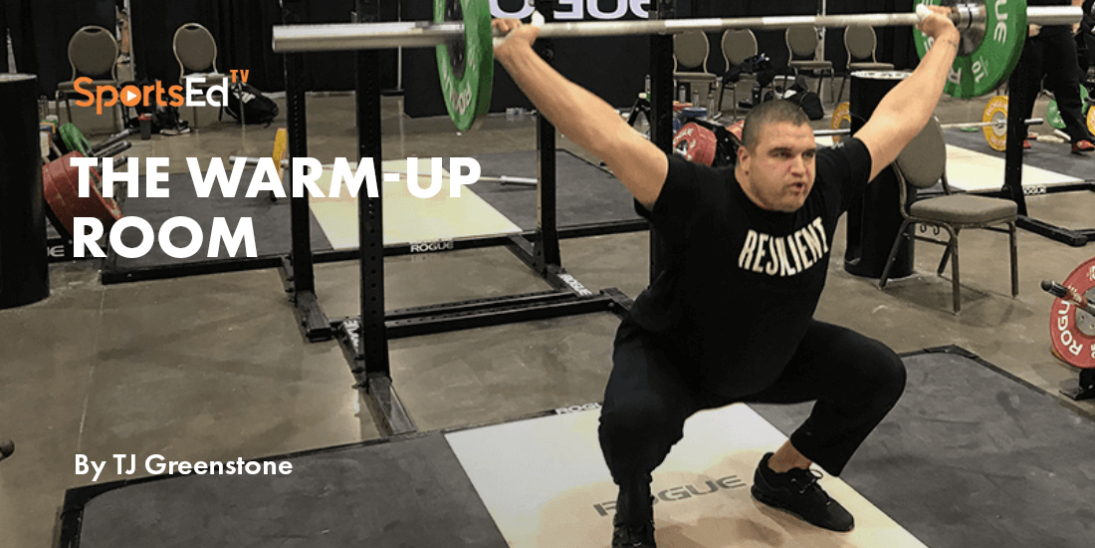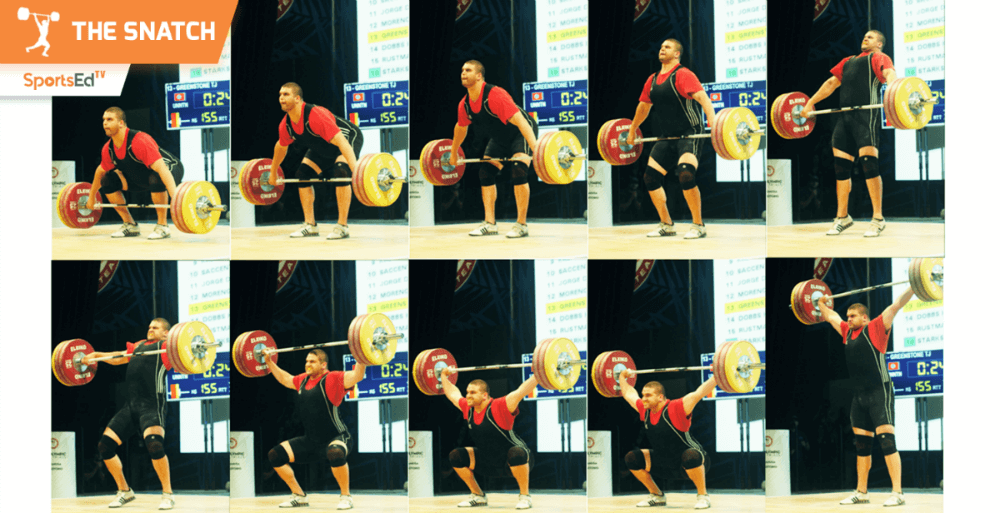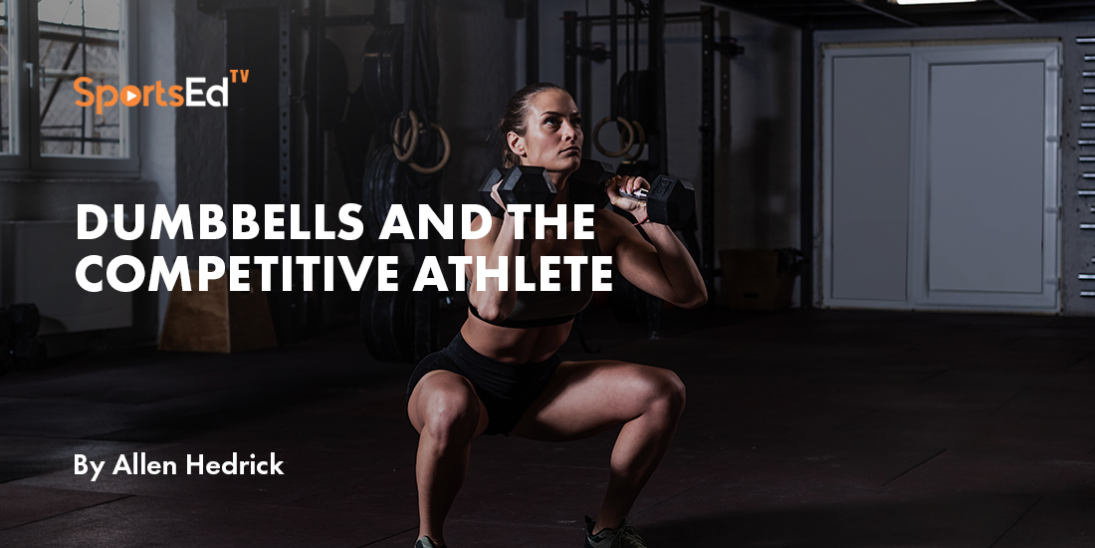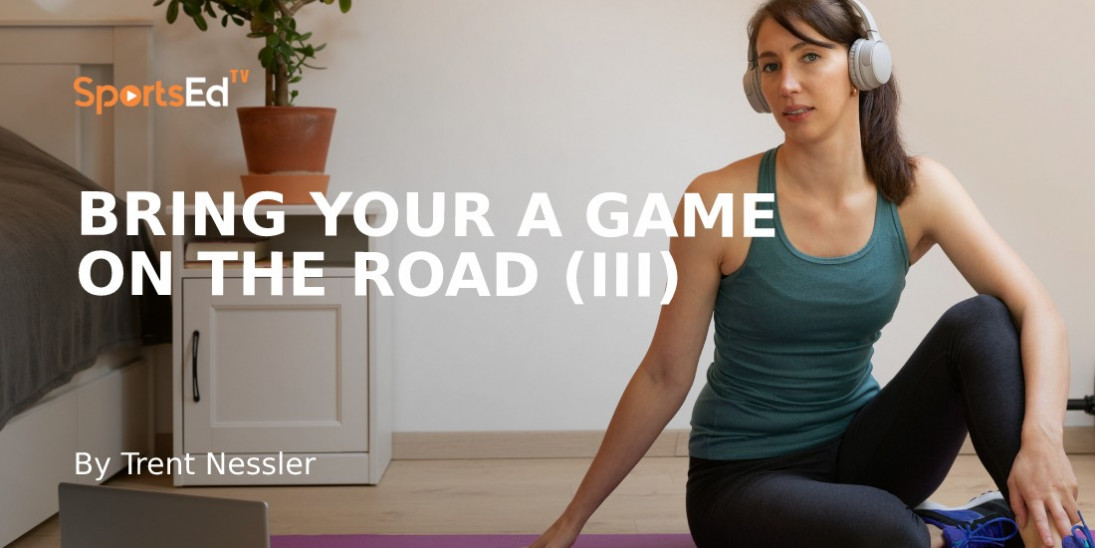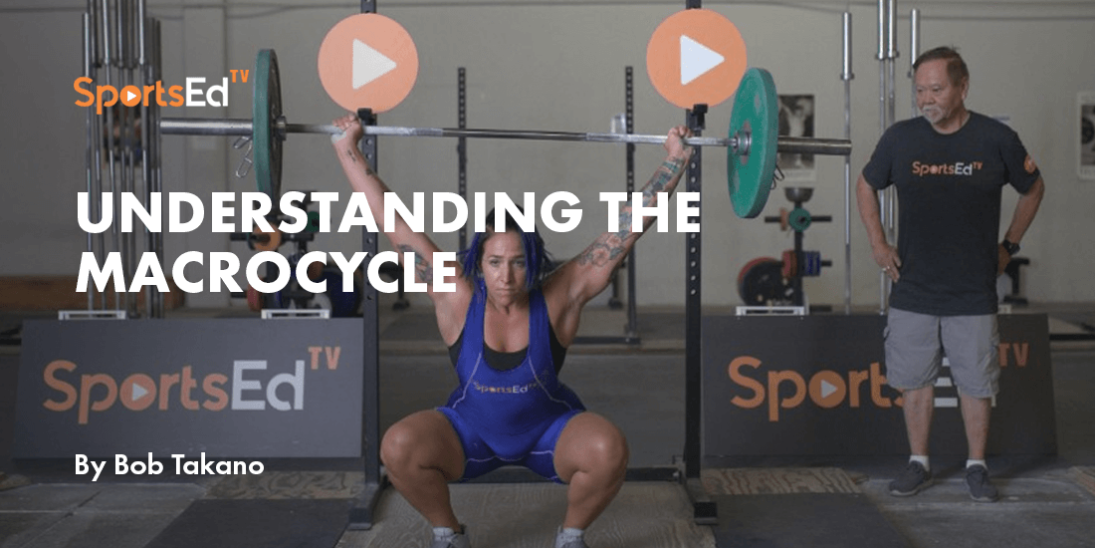Weightlifting, Strength And Conditioning
Welcome and thanks for visiting...

Coming Back From Injury By TJ Greenstone
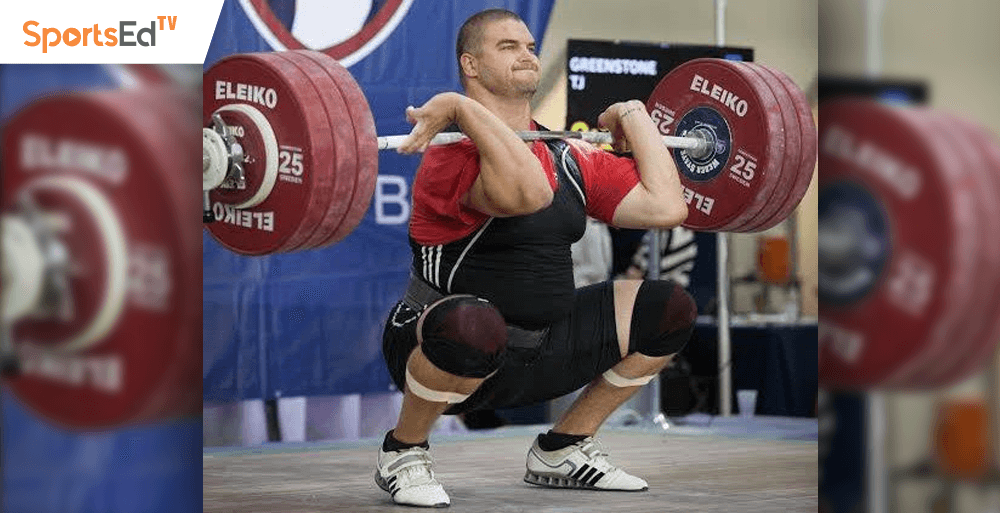
Author TJ Greenstone, MA, SCCC, USAW II is an assistant strength and conditioning coach at Butler University. He is the 2019 USA Weightlifting National Champion in the superheavyweight category.
To be clear, I’m not a medical doctor, nor am I offering medical advice. I am simply a banged-up athlete who is sharing an account on what helped me through injuries that I’ve acquired in the sport of weightlifting. If you are hurt, first seek the advice of a medical doctor prior to beginning any rehabilitation process.
Leading up to the 2016 USA Nationals I was dealing with some Achilles pain. Given that I was so close to such a large competition, the pain was mostly ignored and just dealt with using over the counter anti-inflammatories. After a successful National Championship in which I placed second with PRs in the clean and jerk and total, I got back to more serious training. Following a heavy training session, I attempted to dunk a basketball, which resulted in an Achilles tendon “pop.” The results came back as an avulsion fracture of my calcaneal bone where the Achilles ripped a small portion of bone off of my heel. Now what?
Risk vs. Reward
Understand that as one climbs the ladder in any sport intensities increase, the volume of practice increases, pressure increases, and the overall stress on the body is likely to increase. Along with these increases come an inherent risk of injury, especially overuse injuries. The bottom line, if the technique is not solidly refined the body will only survive so long before something gives out. Choose a sport like weightlifting where large loads are lifted explosively and dynamically through a full range of motion (whether or not you have stability in the lifts) and you could be setting yourself up for issues down the road.
By no means am I saying weightlifting is dangerous! But if you don’t understand how your body moves, pushing through pain in any sport is bad. The higher level you attain in the sport of weightlifting the bigger the rewards include winning championships, attaining “sponsors,” traveling internationally, and representing your country on the global stage. However, the risks of improper programming, poor nutrition, and recovery, and being a “poor mover” may show up at an unfortunate time.
Cause vs. Symptoms
With the onset of an injury, you must find the cause! My right Achilles had pain. Why? Was it because my right Achilles was weak or damaged? Probably not in the early stages. But years prior, while in college, I had had my left meniscus scoped. As a result of that procedure, I lost some flexion in the knee. Going into a full range squat with asymmetrical knee flexion puts more stress on the opposite side (my right). That stress festered in my Achilles region and it eventually gave. The lack of flexion in the knee is the root cause and until that gets addressed, the issues will continue to arise. The human body is a great compromiser until it is not.
Note the difference in my ankle flexibility with this 190kg clean.
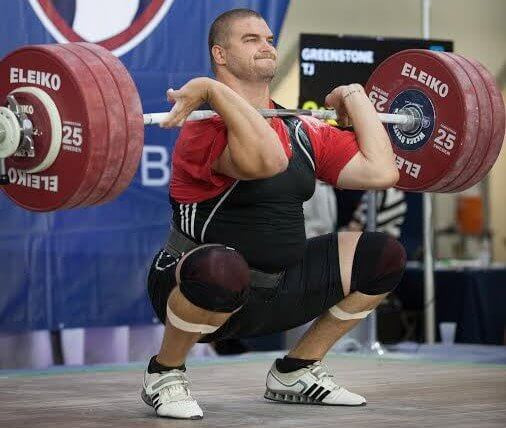 |
| TJ Greenstone needed this 191kg C&J to win the +109kg category at the 2015 USAW University National Championships. Note the asymmetrical and undesirable heel elevation. Coach Greenstone’s blog explains how this situation eventually led to his injury and rehabilitation. |
Surround With Support
When dealing with an injury be sure to develop a great support team. You need people not only for encouragement, but to help guide you through the process of recovery. Find people smarter than yourself, folks, who have had previous success dealing with this type of injury, ideally with weightlifters. Collect a “High Performance” team around you. The model high-performance team consists of your sports coach, a manual therapist, a massage therapist, a nutritionist, an athletic trainer, and a physician. This team creates and executes a plan for your improvement and return to competition. The road back from injury has many peaks and valleys. Put people around you to celebrate your accomplishments with you, and encourage you so the valleys are not so deep.
It’s All About the Journey
Conventional wisdom suggests a novice weightlifter should not max out or establish 1RM loads until they have undergone several months of progressive training. We know lifting heavy loads does not occur overnight. Keep in mind that your return from injury also requires a sensible, systematic, and progressive approach.
While this is a basic training principle, experienced athletes eager to return to top form may easily ignore the concept. Remember, backing off to recover from an injury involves not only time to heal the injury, but usually, the stress on other tissues and systems is also reduced. The rehabilitation process affects the body’s muscles, tendons, and ligaments. It’s best to progress slowly to ensure long-term success and recovery.
We know beginners do not achieve elite speed or strength overnight. The same applies when coming back from injury. It takes time and systematic progression for the experienced athlete to return to full strength.
Understand Training
Personally, greater education and improved insight were large parts of my successful return from injury. I gradually recognized that despite my well-rounded background I had of late become too much of a specialist. There were some holes in my programming and I had ignored several things that my body needed.
Nearly all my focus had been on lifting, and I was guilty of “going to the well” too often. Craving improvement led to highlighting improvement to my personal records. This led me to go off the script many times when I shouldn’t have. Overuse injuries such as mine do not occur overnight; problems occur when mistakes are repeated over time.
Taking a long view, I knew that a solid annual plan would successfully address a wide range of muscular qualities (maximum strength, strength speed, speed strength, and speed) and lead to peaking at the right time. Obvious in my case, I’d forgotten that properly programed plyometrics help to strengthen the connective tissues.
Turning a Negative Into a Positive
Any setback can be a perfect set up for a comeback. Return from injury can be a learning tool. For me, being unable to train the way I wanted was a time that God forced me to hit the “pause” button, but not stop training entirely. I took time to examine my body and the weaknesses that I had pushed aside.
As a result of not being able to dorsiflex the injured ankle for about three months, I increased work on my upper body. I incorporated some powerlifting variations that targeted previously ignored weak areas. As a result, I become a lot stronger. (I also got slower, but that’s a topic for another blog).
My goal of increasing bodyweight was accomplished, along with increased effort on mobility training that had been ignored.
The whole experience made me a better coach. I learned more about my body, plyometrics, and progressions, allowing me to write better programs for my athletes.
Final Thoughts
Injury can seem like the end of the world. So much progress gets stalled so quickly and you can feel lost. How will you approach an injury? My setback was truly positive because I viewed my setback as a setup, one leading to higher performance. Your comeback is in your hands. Surround yourself with knowledgeable people who care. Understand that proper progression is key to a long-term fix. Also, educate yourself on how you are training and examine if there are any key pieces missing. Lastly, be committed to turning a negative into a positive.
THANKS!
So many people contributed to my successful comeback. Thanks to:
-
My wife and family for their supports
-
Josh Renkens, the best “outside the box” thinking chiropractor in the country
-
Jeff Herring, an amazing family friend, and foot and ankle doctor
-
Harvey Newton and Leo Totten for great support and advice on training
-
Greg Taylor, Butler University Athletic Trainer who always has time for me
-
Jordan Stanley, Mike Cabello, the staff at USM, for being my training partners and pushing me
-
God for aligning everything well enough and allowing my body to heal
My outcome? Two-plus years later I returned to full strength and surpassed my personal bests lifts. The results included winning the American Open 2018 and becoming USAW National Champion in 2019.

